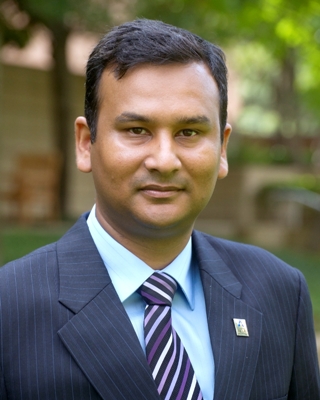A new material has been developed at University of Texas at Arlington by mixing ceramics and modifying molecular structures. The advanced material is less brittle but retains the strength of ceramics, and is hoped to find application in power plants and on spacecraft.
 Ashfaq Adnan, UT Arlington assistant professor in mechanical and aerospace department
Ashfaq Adnan, UT Arlington assistant professor in mechanical and aerospace department
Ashfaq Adnan, an assistant professor at the Mechanical and Aerospace Engineering department of UT, leads this study, and has received a highly competitive $120,000 Early-concept Grant for Exploratory Research (EAGER) from the National Science Foundation to aid his research.
"Certain engineering structures need to operate at very high temperature. The space shuttle is one such structure. Although metals are very resilient, the challenge with using them at very high temperatures is that they melt," commented Adnan. "Ceramics are very strong but also are very brittle. In engineering terms, it means ceramics are not ‘tough.’ Think of what happens when you drop a ceramic mug or plate. It shatters. This research will yield a new generation of ceramics that can withstand both extreme heat and collisions."
Adnan also stated that the innovative ceramic material is likely to solve issues generally linked with next generation spacecraft.
Adnan’s team realized that by mixing various ceramics belonging to the same family, they could achieve this additional strength. The title of the Adnan’s research is “EAGER: Building Strong and Tough Multiphase Ceramics via Interface Tailoring.”
Interface tailoring basically refers to the mixing of ceramics from same family. Dean of the UT Arlington College of Engineering, Khosrow Behbehani, has praised Adnan’s work and underlined the significance of the NSF award to UT Arlington.
“The EAGER grants that NSF awards are aimed at exploring concepts that have the potential of making a significant impact in the field,” Behbehani said. “The awarding of this grant indicates that Dr. Adnan’s idea about a new type of ceramic material has such a high potential.”